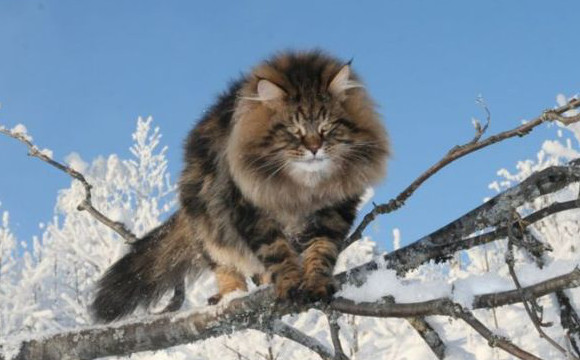History and Origins
The Siberian cat breed, though relatively new to the United States, boasts a rich history in Asia and Europe. Their exact origins remain unclear, but it’s believed they arrived in Siberia with Russian emigrants. The harsh Siberian climate helped develop this breed into a hardy, longhaired cat, capable of enduring severe conditions. The breed gained European recognition in the late 19th century and was noted in Harrison Weir’s book, Our Cats and All About Them.
Breeder Elizabeth Terrell introduced the Siberian cat to America in the late 1980s. As a Himalayan breeder and Russian culture enthusiast, she responded to an appeal for cat breeders willing to trade or donate Himalayans to Russia. Terrell exchanged four Himalayans for three Siberians in 1990, which marked the beginning of the breed’s establishment in the U.S. Terrell’s dedication led to the formation of the breed’s American standard based on the Russian model, ensuring the purity and authenticity of the breed.
Physical Characteristics
Siberian cats are one of the largest domestic cat breeds. Males typically weigh between 17 and 26 pounds, while females range from 13 to 17 pounds. They possess a long, thick coat with a full ruff and a dense undercoat that thickens in colder weather. The breed’s oily guard hairs give their fur water-resistant properties, which is essential for their survival in harsh climates. Siberians come in a variety of colors and patterns, except for pointed colors. Pointed Siberians, known as Nevsky Masquerades, exist in Russia.
Personality and Behavior
Siberian cats are known for their affectionate and playful nature. They are highly intelligent and display problem-solving abilities to achieve their desires. These cats are very agile and excellent jumpers, capable of leaping onto high furniture with ease. They also have a fascination with water, often playing with water dishes or exploring bathtubs.
Care and Maintenance
Siberian cats require moderate grooming to maintain their thick coats. Regular brushing helps prevent matting and reduces shedding. Despite their long fur, they have lower grooming needs compared to other longhaired breeds. Siberians are generally healthy and hardy, with a robust immune system that contributes to their longevity. They are good with children and other pets, making them excellent family companions.
Health Considerations
While Siberians are typically healthy, they can be prone to certain genetic conditions. It’s important for potential owners to acquire cats from reputable breeders who conduct health screenings. Regular veterinary check-ups are essential to maintain their health and well-being.
Conclusion
The Siberian cat is a fascinating breed with a rich history and captivating characteristics. Their resilience, intelligence, and affectionate nature make them wonderful pets. With proper care and attention, these majestic cats can thrive in a variety of environments, providing companionship and joy to their owners.

